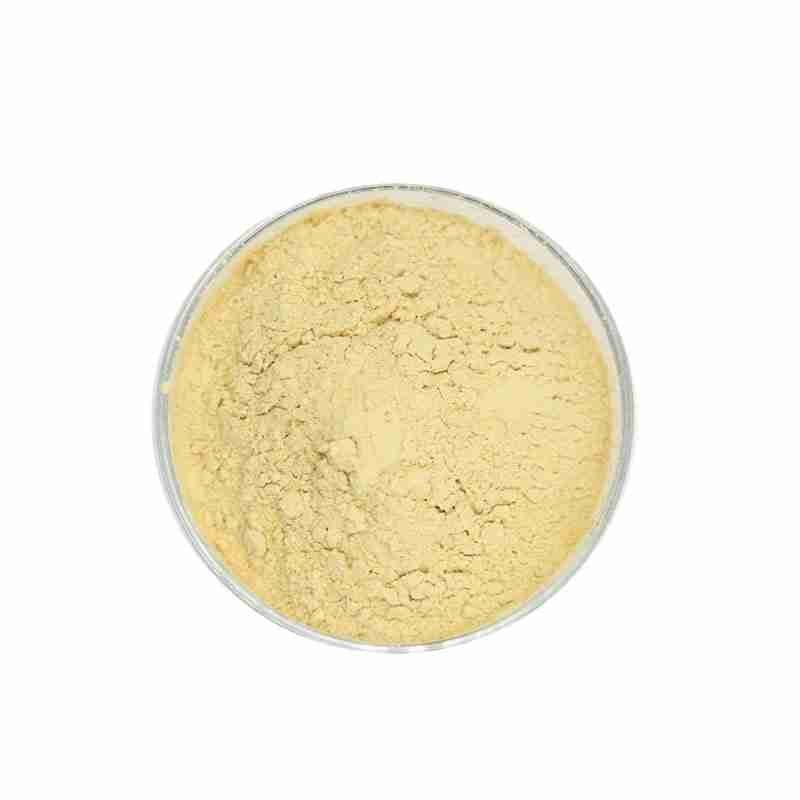2-Hydroxypropyl Methacrylate CAS #27813-02-1
2-Hydroxypropyl methacrylate is an enoate, which is a 1-methacryloyl derivative of propane-1,2-diol. It has the feature of polymerizing monomers. It originates from propane-1,2-diol as well as methacrylic acid.
Hydroxypropyl methacrylate (HPMA) is an anemic clear liquid with irritant as well as wonderful preference. The product has a percentage of polymerization inhibitor and a percentage of methacrylic acid and propylene oxide. HPMA is utilized to manufacture acrylic polymers for adhesives, inks and also finishes for automotive, electrical as well as metal applications. The added hydroxyl enhances the adhesion to the surface area, integrates the crosslinking websites, and also enhances it with corrosion resistance, haze resistance and also use resistance.
发送询盘
2-Hydroxypropyl Methacrylate CAS #27813-02-1
| 2-Hydroxypropyl methacrylate Basic information |
| Product Name: | 2-Hydroxypropyl methacrylate |
| Synonyms: | 2-Propenoicacid,2-methyl-,monoesterwith1,2-propanediol;METHACRYLIC ACID HYDROXYPROPYL ESTER;HYDROXYPROPYL METHACRYLATE, MIXTURE OF I SOMERS, STAB.;HYDROXYPROPYL METHACRYLATE, 97%, MIXTURE OF ISOMERS;METHACRYLIC ACID HYDROXYPROPYL ESTER (MIXTURE OF 2-HYDROXY-N-PROPYL AND 2-HYDROXY-1-METHYLETHYL METHACRYLATE)(STABILIZED WITH MEHQ) 95+%;2-HYDROXYPROYL METHACRYLATE;METHACRYLICACID,1,2-PROPANEDIOLESTER;Methacrylsurehydroxypropylester |
| CAS: | 27813-02-1 |
| MF: | C7H12O3 |
| MW: | 144.17 |
| EINECS: | 248-666-3 |
| Product Categories: | C6 to C7Monomers;Acrylic Monomers;Carbonyl Compounds;Esters;Methacrylate;monomer;C6 to C7;Industrial/Fine Chemicals |
| Mol File: | 27813-02-1.mol |
 |
|
| 2-Hydroxypropyl methacrylate Chemical Properties |
| Melting point | -58??C |
| Boiling point | 57 ??C/0.5 mmHg (lit.) |
| density | 1.066 g/mL at 25 ??C (lit.) |
| vapor density | >1 (vs air) |
| vapor pressure | 0.05 mm Hg ( 20 ??C) |
| refractive index | n20/D?1.447(lit.) |
| Fp | 206???F |
| storage temp. | 2-8??C |
| solubility | 107g/l |
| form | Liquid |
| color | Clear |
| Specific Gravity | 1.066 |
| PH | 6 (50g/l, H2O, 20??) |
| Water Solubility | Soluble in water. |
| BRN | 1752228 |
| InChIKey | GNSFRPWPOGYVLO-UHFFFAOYSA-N |
| LogP | 0.97 at 20?? |
| CAS DataBase Reference | 27813-02-1(CAS DataBase Reference) |
| EPA Substance Registry System | Hydroxypropyl methacrylate (27813-02-1) |
| Safety Information |
| Hazard Codes | Xi,T |
| Risk Statements | 36/37/38-43-36-46-45 |
| Safety Statements | 26-36/37-37/39-24/25-45-53 |
| WGK Germany | 1 |
| RTECS | UD3442500 |
| TSCA | Yes |
| HS Code | 29161490 |
| Hazardous Substances Data | 27813-02-1(Hazardous Substances Data) |
| Toxicity | rat,LD50,oral,11200mg/kg (11200mg/kg),LUNGS, THORAX, OR RESPIRATION: ACUTE PULMONARY EDEMAGASTROINTESTINAL: OTHER CHANGESLUNGS, THORAX, OR RESPIRATION: DYSPNEA,National Technical Information Service. Vol. OTS0544834, |
- 2
- 2-diallylpent-4-en-1-amine
- 4
- 95-16-9
- Ammonium sulfamate
- Benzothiazole
- cas:67889-00-3ح2
- cas:83524-75-8 | pigment black 32
- cas:928836-00-4 | 2
- cas:932745-70-5 | 4
- Chemical Minerals
- Coconut diethanolamide
- Daily Chemicals
- discount
- for sale
- General pvc resin
- hexyl D-glucoside
- in stock
- Lauramidopropyl betaine
- LAURIC ACID MONOETHANOLAMIDE
- Petroleum Additives
- Plasticiser
- Ploymers
- price
- PVC
- quotation
- Raw Materal
- Remove term: Petroleum Additives Petroleum Additive
- SODIUM ETHYL 2-SULFOLAURATE
Related Products
Product name:HYDROXYPROPYL GUAR HYDROXYPROPYLTRIMONIUM CHLORIDE
Purity:99%
Appearance:Light Yellow Powder
Package:Customized according to customer needs.
Sample:Available
Chemical Name: Imazalil Sulfate
CAS No.: 58594-72-2
Molecular Formula: C14H14Cl2N2O.H2SO4
Molecular Weight: 395.26
Appearance: Solid
Terpene resin is a type of natural resin derived from terpenes, which are organic compounds found in various plants. It is known for its aromatic properties and is commonly used in the production of fragrances, flavorings, and as a component in adhesives and coatings within the chemical industry. Terpene resin offers a range of benefits, including enhancing the solubility of essential oils and providing a stable base for various applications. Its natural origin makes it a preferred choice for eco-friendly products.
Common English name: 5-iodo-2,3-dihydropyridazin-3-one
CAS No.: 825633-94-1
Molecular formula: C4H3IN2O
Molecular weight: 221.98
Sample: Available
Chemical Name: STODDARD SOLVENT
CAS No.: 64742-88-7
Appearance: Colorless or Light Yellow Liquid
Chemical Name: Zinc citrate
Synonyms: Zinc citrate trihydrate
CAS No.: 546-46-3
Molecular Formula: C6H8O7Zn
Molecular Weight: 257.5
Appearance: White powder
Chemical Name: Potassium Castorate
CAS No.: 8013-05-6
Molecular Formula: C57H107K3O12
Molecular Weight: 1101.74718
Appearance: Yellow Liquid
Chemical Name: UV-120
Other Name: (2’,4’-Di-tert-butylphenyl 3,5-di-tert-butyl-4-hydroxybenzoate)
CAS No.: 4221-80-1
Molecular Fomula: C29H42O3
Molecular weight: 438.66
Assay: ≥99%(LC)
Chemical Name: Dehydrocholic acid
Synonyms: Acide dehydrocholique; Triketocholanic acid
CAS No.: 81-23-2
Molecular Formula: C24H34O5
Molecular Weight: 402.53
Appearance: Powder
Chemical Name: Ammonium Iron(II) Sulfate
Synonyms: Diammonium iron bis(sulphate); iron (ii) ammonium sulfate
CAS No.: 10045-89-3
Molecular Formula: FeH5NO4S
Molecular Weight: 170.95
Product name:Cyclopentane
Purity:96%
Appearance:White powder
Package:25kg/bag
Sample:Available
Polyhexamethylene guanidine hydrochloride, often abbreviated as PHMG-HCl, is a high molecular weight polymeric biguanide compound known for its potent antimicrobial properties. With a chemical structure that features a long chain of methylene groups bridged by guanidine units, PHMG-HCl is effective against a broad spectrum of microorganisms, including bacteria, viruses, and fungi.
This hydrochloride salt form of PHMG is highly soluble in water and is commonly used in various applications due to its non-irritant and non-toxic nature to human skin and mucous membranes. It is widely recognized for its ability to form a colorless and odorless solution, making it an ideal choice for use in personal care products, medical disinfectants, and water treatment processes.
The versatility of PHMG-HCl lies in its cationic nature, which allows it to bind to negatively charged microbial cell walls, disrupting their integrity and leading to cell death. This mechanism of action contributes to its effectiveness as a preservative and disinfectant. Moreover, its substantivity, or the ability to adhere to surfaces, enhances its long-lasting antimicrobial activity.
In summary, Polyhexamethylene guanidine hydrochloride is a reliable and efficient antimicrobial agent, pivotal in industries where hygiene and cleanliness are paramount, offering a safe and sustainable solution for microbial control.


















